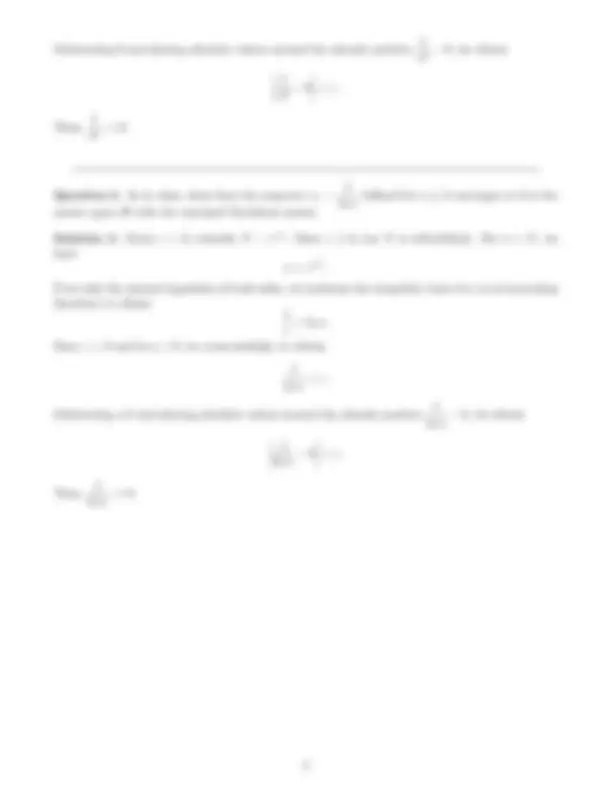



Study with the several resources on Docsity

Earn points by helping other students or get them with a premium plan


Prepare for your exams
Study with the several resources on Docsity

Earn points to download
Earn points by helping other students or get them with a premium plan
Community
Ask the community for help and clear up your study doubts
Discover the best universities in your country according to Docsity users
Free resources
Download our free guides on studying techniques, anxiety management strategies, and thesis advice from Docsity tutors
Solutions to question 1 and 2 from math 394 - topology homework, where students are required to determine if certain sequences in r2 are bounded and convergent using the euclidean metric. The solutions include visualization, boundedness conditions, and convergence proofs.
Typology: Assignments
1 / 2

This page cannot be seen from the preview
Don't miss anything!


Question 1. Below are listed several sequences in R
2 with the Euclidean metric. For each of the
sequences, (i) sketch the sequence in R
2 , (ii) decide if you think that the sequence is bounded, and
(iii) decide if you think the the sequence converges. For (i), by far the best way to plot these is to
plug in several values of n, like n = 1, 2 , 3 , 4 , 5 , 6 , 7 , 8 and get an idea for what the sequence looks
like. For (ii), if you think it is bounded, find an a ∈ R
2 and M > 0 such that xn ∈ BM (a) for all n.
For (iii), if you think it converges, to what do you think it converges? [No formal proof is necessary]
(a) xn =
1 n
for n ≥ 1.
(b) xn =
1 n
n
for n ≥ 1.
(c) xn =
cos
πn 2
, sin
πn 2
for n ≥ 0.
(d) xn =
n cos
πn 2
, n sin
πn 2
for n ≥ 0.
Solution 1a. This sequence is bounded by using a = (1, 0) and M = 2. This sequence converges
to (1, 0).
Solution 1b. This sequence is bounded by using a = (0, 0) and M = 2. This sequence diverges
(does not converge) since it bounces around too much.
Solution 1c. This sequence is bounded by using a = (0, 0) and M = 2. This sequence does not
converge. It seems to cycle amongst the same four points.
Solution 1d. This sequence is not bounded. It is also divergent.
Question 2. As in class, show that the sequence xn =
n
2
defined for n ≥ 1 converges to 0 in the
metric space R with the standard Euclidean metric.
Solution 2. Given ε > 0, consider N =
ε
. Notice that since ε > 0, our N is well-defined. For
n > N , we have
n >
ε
Since n > 0 and
ε > 0, we cross multiply to obtain
n
ε.
Square both sides of an inequality maintains the inequality (since x
2 is an increasing function for
positive values). Thus, we obtain
1
n
2
< ε.
Subtracting 0 and placing absolute values around the already positive
n
2
− 0, we obtain
n^2
< ε.
Thus,
n^2
Question 3. As in class, show that the sequence xn =
ln n
defined for n ≥ 2 converges to 0 in the
metric space R with the standard Euclidean metric.
Solution 3. Given ε > 0, consider N = e
1 /ε
. Since ε 6 = 0, our N is well-defined. For n > N , we
have
n > e
1 /ε .
If we take the natural logarithm of both sides, we maintain the inequality (since ln x is an increasing
function) to obtain
1
ε
< ln n.
Since ε > 0 and ln n > 0, we cross-multiply to obtain
ln n
< ε.
Subtracting a 0 and placing absolute values around the already positive
ln n
− 0, we obtain
ln n
< ε.
Thus,
ln n